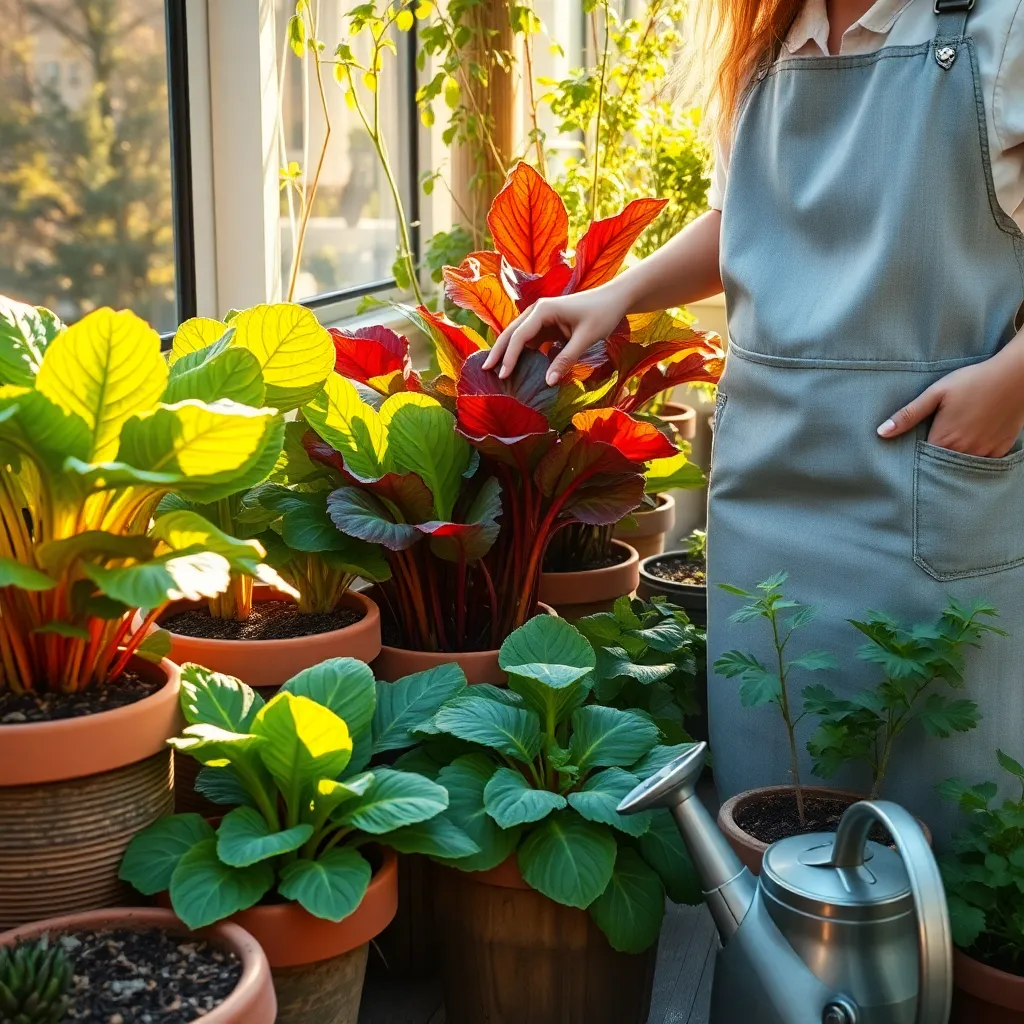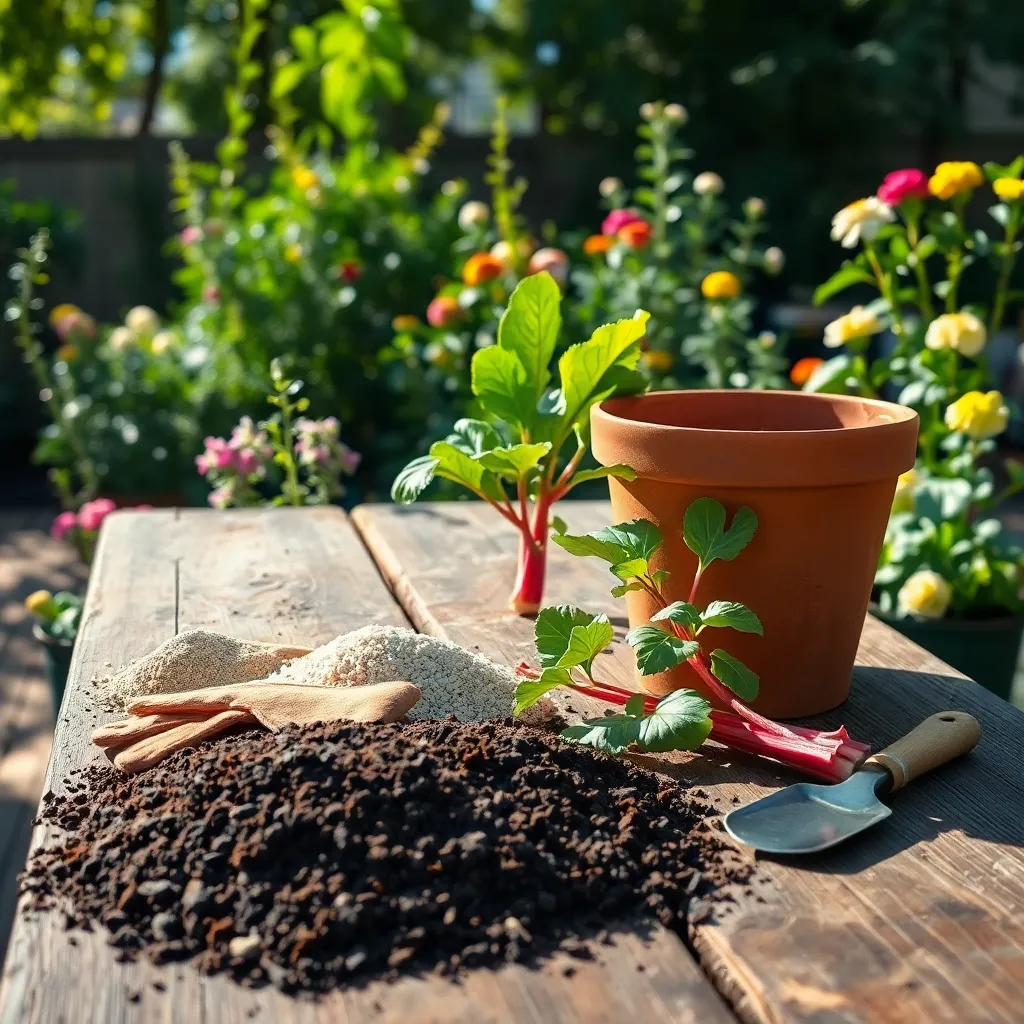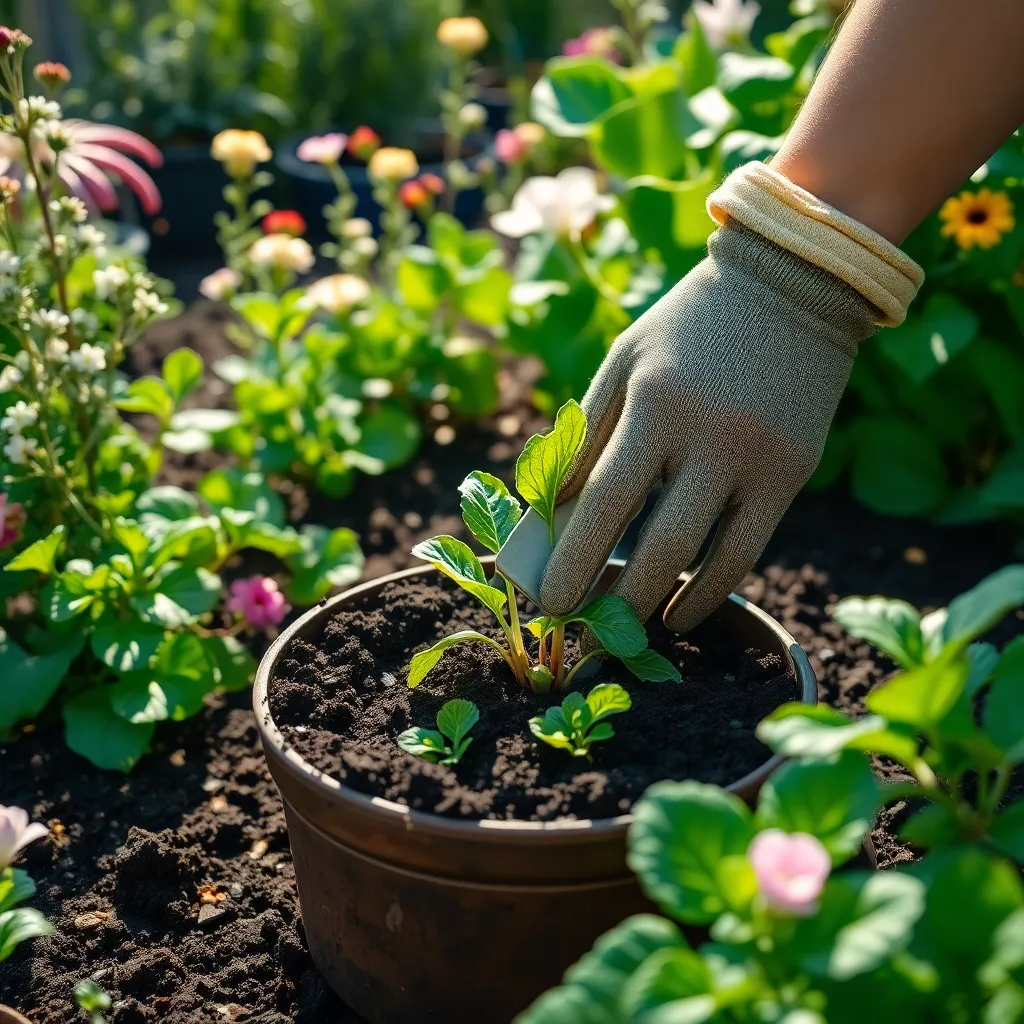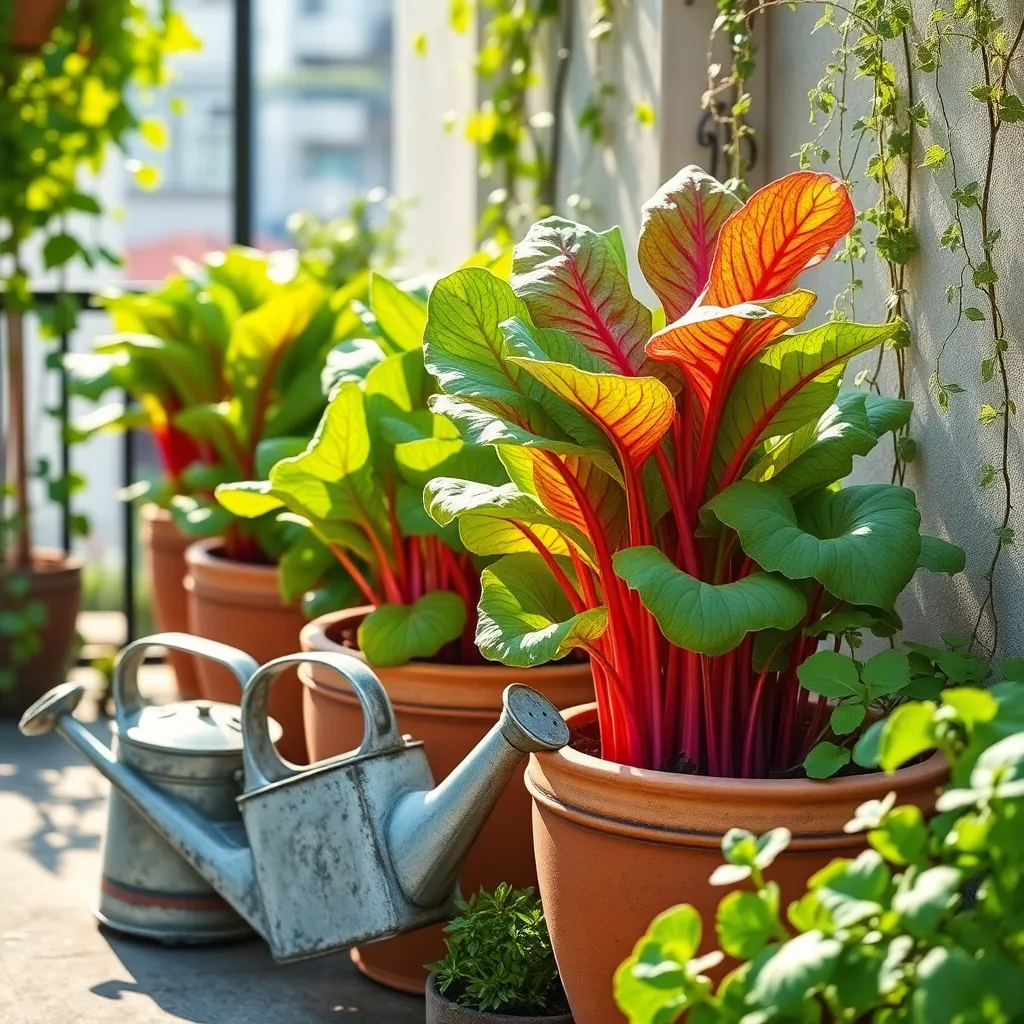Imagine stepping out onto your balcony or patio and being greeted by a vibrant array of leafy greens, thriving in their cozy pots. Growing chard in containers is not just a viable option for those with limited space; it’s a delightful way to infuse your gardening experience with color, flavor, and nutrition. This leafy vegetable, known for its resilience and adaptability, offers both novice and seasoned gardeners the chance to cultivate a nutritious bounty right outside their doorstep.
In this article, we’ll delve into the art and science of growing chard in pots, making it accessible and enjoyable for everyone. Whether you’re starting your very first gardening adventure or looking to expand your container garden repertoire, you’ll find valuable tips and insights to ensure your chard thrives. From selecting the right pots and soil to understanding the sunlight and watering requirements, we’ve got you covered with practical advice. By the end of this journey, you’ll be equipped with the knowledge to nurture your own chard, adding a splash of green to your living space and your dinner plate.
Providing guidance on everything from the initial planting to ongoing care, this article aims to empower you with confidence in your gardening endeavors. You’ll discover how to troubleshoot common issues and how to harvest your chard for maximum freshness and flavor. Together, we’ll explore the rewarding process of container gardening, celebrating the small victories that come with growing your own food. So, roll up your sleeves, grab your gardening gloves, and let’s embark on this exciting leafy adventure!
Select Suitable Chard Varieties

Among the many varieties of chard available, ‘Bright Lights’ is a popular choice due to its colorful stems and tender leaves. This variety not only adds visual interest but is also known for its productive nature, making it ideal for container growing.
For gardeners seeking a more traditional look, ‘Fordhook Giant’ is renowned for its large, glossy green leaves and robust growth. It can withstand a range of temperatures, offering a reliable harvest throughout the growing season.
Beginners might want to try ‘Rhubarb Chard’, which is valued for its striking red stems and mild flavor. This variety thrives in well-draining, nutrient-rich soil and requires regular watering to maintain its vibrant appearance.
When selecting chard varieties for pots, consider the size of the container and available growing space. Ensure your chosen variety can thrive in confined conditions by providing adequate sunlight and using a high-quality potting mix.
Prepare Potting Mix Carefully

When growing chard in pots, preparing the potting mix is crucial for healthy plant development. Start with a high-quality, well-draining mix to ensure the roots have ample access to oxygen and nutrients.
A basic potting mix for chard should contain equal parts of peat moss or coco coir, perlite, and compost. This blend retains moisture while allowing excess water to drain away, preventing root rot.
For an advanced touch, consider adding a slow-release organic fertilizer to the potting mix. This ensures your chard receives a steady supply of nutrients over time without the need for frequent feeding.
Additionally, you can mix in a small amount of vermiculite if you live in a particularly dry climate. Vermiculite helps retain moisture, benefiting chard by keeping the soil consistently damp.
Sow Seeds at Correct Depth

When sowing chard seeds in pots, it is essential to plant them at the correct depth for optimal growth. Generally, chard seeds should be sown about half an inch deep in the potting mix to ensure they receive enough warmth and moisture for germination.
To achieve this depth, consider using a small stick or pencil to create uniform holes in the soil. By ensuring the seeds are planted at the right depth, you can help prevent issues like poor germination or weak seedlings.
It’s important to cover the seeds lightly with soil and gently press down to remove any air pockets. This helps maintain contact between the seed and the soil, promoting better water absorption and seedling emergence.
Chard seeds typically germinate within 7 to 14 days, depending on temperature conditions. Keeping the soil consistently moist but not waterlogged is crucial during this period for successful germination.
Water Consistently and Moderately

Consistent and moderate watering is crucial when growing chard in pots. To maintain healthy growth, ensure the soil remains evenly moist but never waterlogged, as chard does not tolerate waterlogged roots well.
Begin by checking the moisture level of the soil with your finger; the top inch should feel slightly dry before you water again. Water your chard plants deeply, allowing excess water to drain out of the bottom of the pot, which helps prevent root rot.
Consider using self-watering pots or adding a layer of mulch on top of the soil to help retain moisture. A good rule of thumb is to water your chard every 2-3 days during hotter months and reduce frequency in cooler weather.
For those in warmer climates, watering in the early morning or late afternoon can help minimize evaporation. Advanced gardeners may use a drip irrigation system to automate and regulate watering, ensuring a steady supply of moisture without overwatering.
Provide Adequate Sunlight Daily

Chard thrives in sunlight, so it’s essential to position your pots where they can receive at least six hours of direct sunlight each day. If you’re growing chard indoors or in a shaded garden, consider using grow lights to supplement natural light and ensure the plants get the energy they need.
For those in particularly sunny regions, be mindful that excessive heat can stress the plants. In such cases, providing a bit of afternoon shade can help maintain optimal growth conditions. You can achieve this by moving the pots or using a temporary shade cloth during the hottest part of the day.
It’s important to observe how your chard responds to its light conditions and adjust as needed. If the leaves appear pale or the plant grows leggy, it may be a sign that your chard is not getting enough light. Conversely, if the leaves are wilting or showing signs of burn, consider adjusting their exposure to direct sunlight.
Additionally, rotating your pots every few days can help ensure all sides of the plant receive even light exposure, promoting balanced growth. This simple practice can prevent the plant from leaning towards the light source, which is a common occurrence in container gardening.
Conclusion: Growing Success with These Plants
As we wrap up our exploration of how growing chard in pots can serve as a metaphor for nurturing relationships, let’s recap the five key concepts. First, just like selecting the right pot, choosing a supportive environment is essential for relationships to thrive. Second, regular watering mirrors the importance of consistent communication. Third, providing the right nutrients aligns with offering emotional support. Fourth, pruning reflects the need to let go of what’s no longer serving the relationship. Finally, observing sunlight requirements reminds us of the balance between togetherness and personal space.
To put these insights into action, take a moment to assess one area of your relationship that could benefit from a little extra attention. Whether it’s spending quality time or having an open conversation, start today.
Remember, nurturing relationships is a journey, not a destination. Bookmark this article as your go-to guide, ready to inspire you whenever you need a little boost. By embracing these strategies, you’re paving the way for a flourishing relationship garden, where love and understanding grow in abundance. Here’s to your ongoing relationship success—nurture it with care and watch it thrive.
